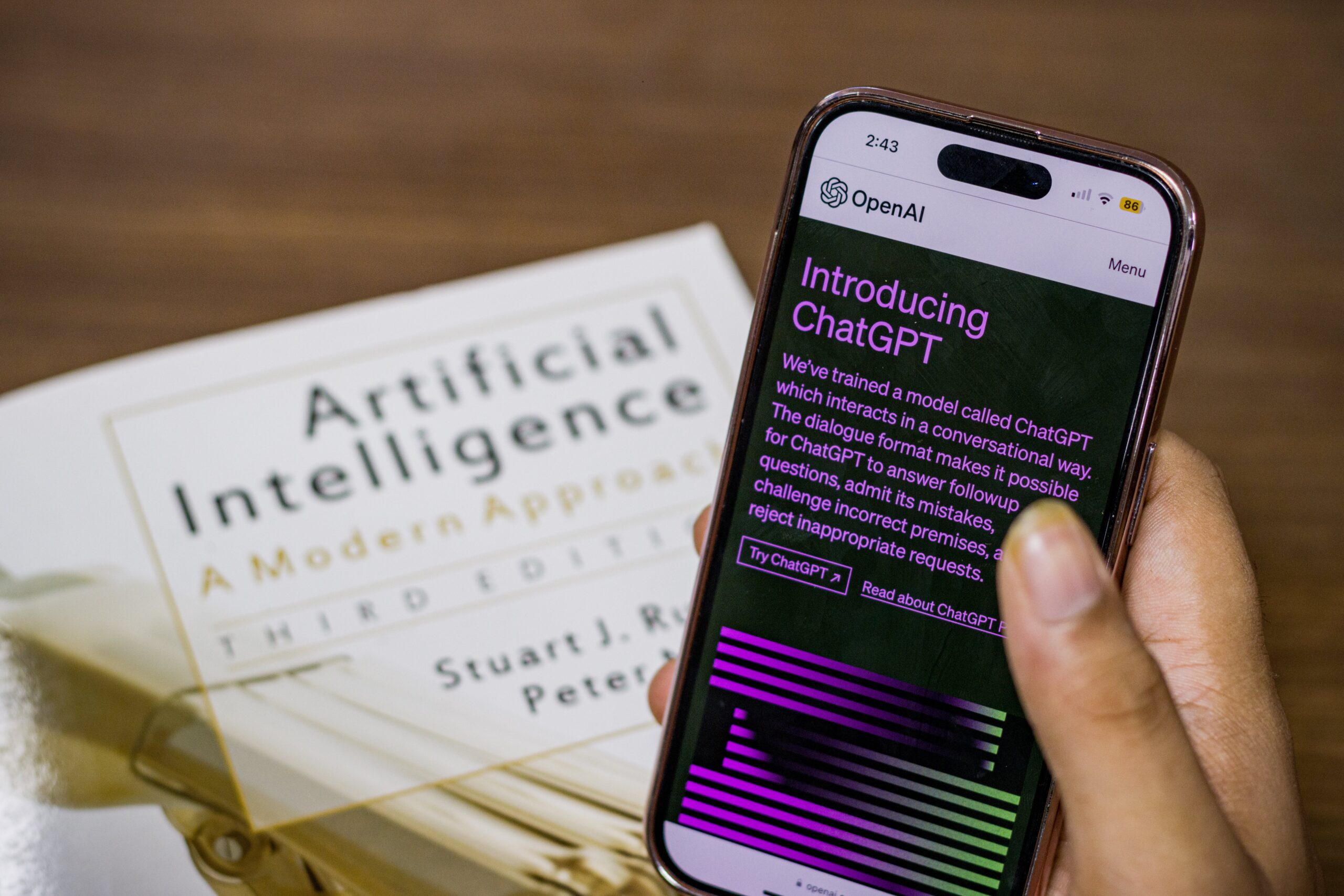Table of Contents
Introduction to Conversational AI
Conversational AI, at its core, refers to the integration of artificial intelligence (AI) technologies into systems designed to engage in natural, human-like conversations. This transformative field harnesses various branches of AI, such as natural language processing (NLP) and machine learning, to enable machines to comprehend, interpret, and respond to human language in a way that mirrors real conversations.
The primary goal of conversational AI is to enhance user interactions with technology, making them more intuitive and user-friendly. This technology finds applications in a wide range of domains, including customer service chatbots, virtual assistants, and voice-activated devices. By leveraging advanced algorithms and contextual understanding, conversational AI strives to bridge the gap between human communication and machines, offering a more seamless and efficient user experience across diverse platforms. As technology continues to advance, conversational AI is playing a pivotal role in shaping the future of human-computer interactions.

Evolution of ChatGPT
The evolution of ChatGPT represents a remarkable journey in the development of conversational AI. It builds upon the advancements of its predecessor, GPT-3, and showcases the continuous efforts to enhance natural language understanding and generation. Initially introduced as a groundbreaking language model, ChatGPT has undergone iterative improvements to address its limitations and refine its conversational abilities. OpenAI has actively sought user feedback and engaged in fine-tuning processes to mitigate instances of generating incorrect or nonsensical responses.
The evolution of ChatGPT has also involved refining its behavior, making it more adaptable to user instructions and preferences. OpenAI’s commitment to responsible AI development is evident through the implementation of safety mitigations to reduce biased outputs and the promotion of ethical usage. The ongoing evolution of ChatGPT reflects a dedication to creating more sophisticated, reliable, and user-friendly conversational AI systems that continue to push the boundaries of natural language processing.
The Foundation: Transformer Architecture
The foundation of modern language models, including ChatGPT, lies in the Transformer architecture. Introduced by Vaswani et al. in 2017, the Transformer architecture has revolutionized natural language processing and machine learning. Unlike its predecessors, the Transformer model relies on a self-attention mechanism, enabling it to consider the entire context of a sequence simultaneously. This mechanism allows the model to capture long-range dependencies and relationships within the input data, making it highly effective for tasks such as language translation and text generation.
The Transformer’s modular structure facilitates parallelization, making it computationally efficient and scalable. Its success has led to widespread adoption in various applications beyond language processing, including image generation and reinforcement learning. The Transformer architecture serves as the backbone for models like GPT (Generative Pre-trained Transformer) series, including ChatGPT, showcasing the enduring impact of this foundational innovation on the field of artificial intelligence.
Understanding ChatGPT Architecture
Attention Mechanism
The attention mechanism is a pivotal component in the field of artificial intelligence, particularly in the domain of natural language processing. Introduced as a core element of the Transformer architecture by Vaswani et al. in 2017, the attention mechanism enables models to focus selectively on different parts of the input sequence when processing information. Unlike traditional models that process input data sequentially, the attention mechanism allows for parallelized computation by assigning varying degrees of importance to different elements in the sequence.
This mechanism proves particularly effective in capturing long-range dependencies and relationships within the data, making it highly suitable for tasks such as language translation and text generation. By dynamically adjusting the attention weights during processing, the model can give more emphasis to relevant context, significantly enhancing its ability to understand and generate coherent output. The attention mechanism’s versatility has led to its widespread adoption in various artificial intelligence applications, solidifying its role as a fundamental innovation in the field.

Multi-Head Attention
Multi-Head Attention is an extension of the attention mechanism within the Transformer architecture, contributing to its effectiveness in processing and understanding complex relationships in data. In the context of natural language processing and machine learning, the Transformer model uses attention mechanisms to assign different weights to different parts of the input sequence. Multi-Head Attention enhances this capability by utilizing multiple attention heads, each focusing on different aspects of the input data simultaneously.
In essence, the model learns different sets of attention weights, or attention heads, which capture distinct patterns and relationships within the input. These multiple heads operate in parallel, allowing the model to attend to various aspects of the input sequence independently. The outputs from the multiple heads are then linearly combined, providing a comprehensive and nuanced representation of the input information.
Multi-Head Attention proves beneficial in capturing diverse features and contextual information, making the model more robust and capable of handling intricate relationships in data. It enhances the expressive power of the model, enabling it to excel in tasks such as language translation, text summarization, and other natural language processing applications where understanding intricate dependencies is crucial. The incorporation of Multi-Head Attention has become a standard practice in advanced language models, including those used in applications like ChatGPT, contributing to their ability to generate coherent and contextually relevant responses.
How ChatGPT Learns
ChatGPT learns through a process called pre-training and fine-tuning. In the pre-training phase, the model is exposed to a massive dataset containing parts of the Internet, learning to predict what comes next in a sentence. This process helps the model grasp grammar, facts, reasoning abilities, and some aspects of world knowledge. The architecture underlying ChatGPT is the Generative Pre-trained Transformer (GPT), utilizing a transformer neural network.
Following pre-training, the model undergoes fine-tuning to make it more specific and controlled. OpenAI fine-tunes the model on a narrower dataset generated with the help of human reviewers who follow guidelines provided by OpenAI. This step is crucial for shaping the model’s behavior and ensuring it aligns with OpenAI’s standards for safety and ethical considerations. Continuous feedback and iterations, based on user interactions and improvements identified during the fine-tuning process, contribute to refining ChatGPT’s performance and addressing potential biases or inaccuracies in its responses. In this way, the learning process is a dynamic and ongoing effort to enhance the model’s capabilities and align it with the desired outcomes set by OpenAI.
Training Data and Preprocessing
The training data for models like ChatGPT consists of diverse and extensive textual information from a wide range of sources on the internet. This data is used in the pre-training phase to teach the model language patterns, grammar, factual knowledge, and reasoning abilities. The large-scale dataset helps the model develop a general understanding of human language and context.
Preprocessing is a crucial step in preparing the training data for effective model training. During this phase, the raw text data is cleaned, tokenized, and formatted to make it suitable for input into the neural network. Tokenization involves breaking down the text into smaller units, often words or subwords, to create a structured input format. This process allows the model to handle and analyze language in a more manageable way.
Additionally, during preprocessing, special tokens may be added to indicate the beginning and end of sentences, and attention masks may be incorporated to guide the model’s focus. The preprocessed data is then used in the training process, where the model learns to generate coherent and contextually relevant responses based on the patterns and information present in the training data. The quality and diversity of the training data, as well as the effectiveness of preprocessing, play significant roles in shaping the model’s language understanding and generation capabilities.
Practical Applications of ChatGPT
ChatGPT has found practical applications across various domains, showcasing its versatility in natural language understanding and generation. Some notable applications include:
- Customer Support Chatbots: Many companies deploy ChatGPT-based chatbots to handle customer inquiries and provide assistance. These chatbots can understand and respond to a wide range of user queries, offering a more interactive and responsive customer support experience.
- Content Creation and Writing Assistance: ChatGPT can be used to assist writers and content creators by generating ideas, suggesting improvements, or even co-authoring pieces. It aids in brainstorming, overcoming writer’s block, and enhancing the overall creative writing process.
- Language Translation: ChatGPT’s language capabilities make it useful for language translation applications. It can translate text from one language to another, facilitating cross-cultural communication and breaking down language barriers.
- Educational Tools: ChatGPT can be integrated into educational platforms to provide personalized tutoring, answer student queries, and offer explanations on various subjects. It enhances the learning experience by providing interactive and context-aware assistance.
- Programming Assistance: Developers can utilize ChatGPT to get programming-related help, generate code snippets, or seek explanations for coding concepts. It acts as a conversational coding assistant, aiding in problem-solving and code optimization.
- Interactive Interfaces: ChatGPT can be integrated into applications to create interactive and conversational interfaces. This can be useful for enhancing user engagement in software, games, or virtual environments.
- Virtual Assistants: ChatGPT can serve as the foundation for virtual assistants, providing users with a natural language interface for tasks such as setting reminders, sending messages, or retrieving information.
- Simulated Role-Playing: In gaming and entertainment, ChatGPT can be employed to create dynamic and realistic non-player characters (NPCs) with sophisticated dialogue systems, enriching the gaming experience.
While ChatGPT excels in these applications, it’s important to note that the model’s responses are generated based on patterns learned from its training data, and it may not always produce contextually perfect or factually accurate outputs. Therefore, careful consideration and oversight are necessary in deploying ChatGPT for specific use cases.
Pros and Cons of Conversational AI
Pros of Conversational AI:
- 24/7 Availability: Conversational AI enables businesses to provide round-the-clock customer support and assistance without human intervention, improving accessibility and responsiveness.
- Scalability: AI-driven chatbots and virtual assistants can handle a large volume of simultaneous conversations, making them scalable for businesses with growing customer bases.
- Cost-Effective: Implementing conversational AI can reduce operational costs by automating routine and repetitive tasks, freeing up human resources for more complex and value-added activities.
- Consistent Responses: Conversational AI systems provide consistent and standardized responses, ensuring that users receive uniform information and assistance across different interactions.
- Efficient Data Handling: AI models can process and analyze vast amounts of data in real-time, extracting valuable insights and trends that can inform decision-making processes.
- Enhanced User Experience: Conversational AI can create personalized and interactive user experiences, making interactions with applications, websites, and services more engaging and user-friendly.
Cons of Conversational AI:
- Limited Understanding: Conversational AI systems may struggle with nuanced understanding, context, and sarcasm, leading to potential misinterpretation of user input.
- Bias and Fairness Concerns: If not carefully designed and monitored, conversational AI models can inherit biases present in their training data, leading to biased or unfair responses.
- Lack of Empathy: While conversational AI can simulate understanding, it lacks genuine empathy and emotional intelligence, which may be crucial in certain customer service or support scenarios.
- Security and Privacy Risks: Storing and handling sensitive information in conversational AI systems pose security and privacy risks. If not properly secured, there’s potential for data breaches and misuse.
- Dependency on Training Data: The quality and diversity of training data significantly impact the performance of conversational AI. Biases and inaccuracies present in the training data can be reflected in the model’s responses.
- Overreliance on Scripts: Some conversational AI systems operate based on pre-defined scripts, limiting their ability to handle truly dynamic and unpredictable conversations.
ChatGPT’s Impact on Language Understanding
ChatGPT has had a profound impact on language understanding by demonstrating the capabilities of large-scale, pre-trained language models. Its architecture, based on the Transformer model, allows it to capture intricate patterns and relationships within language, enabling it to understand and generate human-like text. Several key aspects showcase ChatGPT’s impact on language understanding:
- Contextual Understanding: ChatGPT excels in understanding context within a conversation. It leverages its pre-training on vast datasets to comprehend the nuances, references, and context shifts during interactions, leading to more contextually relevant responses.
- Diverse Vocabulary and Concepts: Through exposure to a wide range of internet text during pre-training, ChatGPT has acquired a diverse vocabulary and a broad understanding of various concepts. This contributes to its ability to handle a wide array of topics and respond meaningfully to diverse user queries.
- Problem-Solving and Reasoning: ChatGPT demonstrates an ability to engage in logical reasoning and problem-solving. It can follow through on multi-turn conversations, address user queries, and provide explanations, showcasing a level of understanding that goes beyond simple keyword matching.
- Adaptability to User Input: The model can adapt to different styles of input and user instructions. It accommodates variations in phrasing, responds to prompts with varied tones, and adjusts its output based on the given context, indicating a robust level of language understanding.
- Learning from User Feedback: OpenAI actively seeks user feedback and employs a fine-tuning process to improve ChatGPT’s behavior. This iterative learning approach helps address limitations, reduce biases, and enhance the model’s performance based on real-world usage.
- Enhanced Communication: ChatGPT contributes to more natural and engaging communication between humans and machines. Its ability to understand and generate coherent and contextually relevant responses fosters a conversational experience that is closer to human-to-human interaction.
Future Trends in Conversational AI
Continued Advancements
A Continued advancements in language models, exemplified by ChatGPT, are shaping the landscape of natural language processing. Ongoing research efforts are focused on refining models, improving contextual understanding, and addressing limitations. Fine-tuning processes, informed by user feedback, play a crucial role in enhancing the models’ behavior and mitigating biases.
The evolution of these language models reflects a commitment to achieving more nuanced language understanding, thereby expanding their applicability in various domains, from customer service to educational tools. As these advancements persist, the field anticipates even more sophisticated models that push the boundaries of conversational AI, fostering richer and more dynamic interactions between machines and humans.

Tips for Engaging Conversations with ChatGPT
Crafting Effective Queries
Users can enhance their interactions by formulating clear and concise queries, ensuring ChatGPT comprehends their intent accurately.
Understanding Model Limitations
Understanding model limitations is crucial in deploying and interacting with AI models like ChatGPT. While these models excel in various language tasks, they have inherent constraints. They may generate incorrect or nonsensical responses, be sensitive to input phrasing, and lack true comprehension or awareness. Additionally, they may inadvertently reflect biases present in their training data. Acknowledging these limitations is essential for users to set realistic expectations, employ appropriate use cases, and exercise caution in sensitive applications. OpenAI actively encourages user feedback to uncover and address these limitations, fostering a collaborative effort to refine and advance AI technologies responsibly.
Ensuring Ethical Interactions
Ensuring ethical interactions with AI models, such as ChatGPT, involves a multi-faceted approach. It begins with designing and training models with fairness and inclusivity in mind, aiming to mitigate biases and prevent unintended consequences. Regular audits and assessments are essential to identify and address any potential ethical issues that may arise during model deployment.
Overcoming Challenges in Conversational AI
Addressing Bias and Fairness
Addressing bias and ensuring fairness in AI models, including ChatGPT, is a critical aspect of responsible AI development. Several measures are taken to tackle these issues:
- Diverse Training Data: Incorporating diverse and representative datasets during the model’s training phase helps mitigate biases. Ensuring that the training data spans a wide range of sources and perspectives contributes to a more balanced understanding of language.
- Bias Detection and Mitigation: Implementing techniques to detect and mitigate biases in the model’s output is essential. This involves regularly evaluating responses for potential biases and taking corrective actions to minimize any unfair impact on specific groups or topics.
- Guidelines for Reviewers: Providing clear guidelines to human reviewers during the fine-tuning process is crucial. OpenAI collaborates with reviewers, offering guidance on potential pitfalls related to bias, controversial topics, and other ethical considerations.
- User Feedback Loop: OpenAI actively seeks user feedback to identify and address instances of bias or unfairness. This iterative feedback loop allows continuous improvements and helps uncover unintended biases that may not be apparent in the training data.
- Transparency: OpenAI emphasizes transparency by sharing insights into the model’s behavior, limitations, and the ongoing efforts to address bias. Transparent communication helps users understand the system’s capabilities and limitations, fostering trust.
- Ethical AI Principles: Adhering to ethical AI principles is paramount. Striving for fairness, accountability, and inclusivity in AI development ensures that models like ChatGPT are designed and deployed with ethical considerations at the forefront.
Improving Accuracy
Improving the accuracy of AI models like ChatGPT involves a combination of technical enhancements and iterative learning processes:
- Training Data Quality: Ensuring the quality and diversity of the training data is fundamental. High-quality data that covers a broad range of topics and contexts helps the model develop a robust understanding of language and improves accuracy.
- Fine-Tuning: The fine-tuning process is crucial for refining the model’s behavior. Human reviewers follow guidelines to review and adjust model outputs, helping to align the model with desired accuracy standards and user expectations.
- User Feedback Integration: Actively seeking and incorporating user feedback is key to addressing inaccuracies. Real-world interactions provide valuable insights into areas where the model might misinterpret or generate incorrect responses, enabling continuous improvement.
- Iterative Model Updates: AI developers regularly release updates to enhance model accuracy. These updates may include adjustments to the underlying architecture, fine-tuning methodologies, or the incorporation of additional training data, all aimed at improving the model’s overall performance.
- Contextual Understanding: Improving the model’s contextual understanding contributes to better accuracy. Efforts to enhance its ability to grasp nuanced language, understand references, and maintain context throughout conversations lead to more precise and relevant responses.
- Reducing Biases: Addressing biases in training data and model outputs is crucial for accuracy. Mitigating biases helps prevent the model from generating inaccurate or unfair responses, fostering a more accurate representation of diverse user inputs.
User Education
User education plays a pivotal role in ensuring a positive and informed interaction with AI systems like ChatGPT. Here are key aspects of user education:
- Setting Expectations: Providing clear and transparent information about the capabilities and limitations of the AI system helps users set realistic expectations. Understanding that AI models may not always produce perfect or contextually flawless responses fosters a more informed user experience.
- Guidelines for Effective Usage: Offering guidelines on how to formulate queries and interact effectively with the AI system enhances user experience. Educating users about the types of questions or prompts that yield better results contributes to more satisfying interactions.
- Highlighting Ethical Considerations: Educating users about ethical considerations, such as biases and fairness concerns, promotes responsible usage. Users can contribute to the responsible development of AI by being aware of potential ethical issues and providing feedback on biased or inappropriate responses.
- Privacy and Security Awareness: Informing users about the handling of their data and privacy measures instills confidence in AI systems. Clearly communicating how their information is used, stored, and protected contributes to a more trustworthy user experience.
- Feedback Mechanisms: Encouraging users to provide feedback on their interactions with AI models is crucial. This iterative feedback loop helps developers understand user concerns, improve model behavior, and address issues that may arise during real-world usage.
- Educational Resources: Offering supplementary educational resources, such as FAQs, tutorials, or documentation, empowers users to make the most of AI systems. This can include information on the model’s capabilities, common use cases, and tips for effective communication.
The Human Touch in AI Conversations
The incorporation of the human touch in AI conversations is essential for creating a more engaging and empathetic user experience. While AI models like ChatGPT excel in language generation, they may lack the innate understanding and emotional intelligence that humans possess. Integrating elements of warmth, empathy, and a conversational tone into AI interactions enhances user engagement and makes conversations more relatable. Striking a balance between technological efficiency and a human-like touch ensures that AI complements, rather than replaces, the human aspect of communication, leading to more meaningful and satisfying interactions for users.
Case Studies: Success Stories of ChatGPT
Real-World Applications
Exploring real-world applications showcases the impact of ChatGPT in diverse industries, from healthcare to finance.
Impact on Business Operations
Businesses leveraging ChatGPT witness improved efficiency, cost-effectiveness, and enhanced customer satisfaction.
User Experiences
Understanding user experiences sheds light on the practical benefits of integrating ChatGPT into various platforms.
The Future of Conversational AI
Predictions and Speculations
Predictions and speculations about the future of AI and its impact on society abound. As technology continues to advance, it is anticipated that AI will play an increasingly integral role across various domains. In fields like healthcare, Artificial Intelligence may contribute to more accurate diagnostics and personalized treatment plans. In education, AI could revolutionize learning experiences with tailored tutoring and adaptive curriculum design. However, concerns about job displacement, ethical considerations, and the responsible use of AI persist.
The evolution of AI models, like ChatGPT, hints at the potential for even more sophisticated language understanding and generation capabilities, paving the way for enhanced human-machine collaboration. While optimistic about the positive transformations AI may bring, it is crucial to approach its development and integration with a mindful consideration of ethical implications and societal impact.
Ethical Guidelines and Regulations
Ethical guidelines and regulations are becoming increasingly essential in governing the development and deployment of AI technologies. These guidelines serve as a framework to ensure responsible AI practices, addressing concerns related to biases, privacy, and the impact on society. Organizations and governments worldwide are actively working to establish standards that promote transparency, fairness, and accountability in AI systems.
Ethical considerations also extend to issues like user consent, data security, and the responsible handling of sensitive information. As AI continues to advance, the need for robust ethical guidelines and regulations becomes imperative to strike a balance between technological innovation and ethical considerations, fostering a trustworthy and inclusive AI landscape.
Conclusion
Embracing the Conversational AI revolution entails recognizing its potential, addressing challenges, and responsibly integrating it into various facets of our lives.
FAQs
- Is ChatGPT suitable for all industries?ChatGPT’s versatility makes it applicable across various industries, but its suitability depends on specific use cases and requirements.
- How can users ensure ethical interactions with ChatGPT?Users can ensure ethical interactions by being mindful of their queries, avoiding biases, and understanding the model’s limitations.
- What challenges does Conversational AI face in terms of bias?Conversational AI may exhibit biases present in the training data, emphasizing the need for ongoing efforts to address and mitigate bias.
- Can ChatGPT understand multiple languages?ChatGPT’s proficiency in Natural Language Processing enables it to understand and generate text in multiple languages.
- What is the future outlook for Conversational AI?The future of Conversational AI looks promising, with continued advancements, ethical considerations, and integration with emerging technologies.









